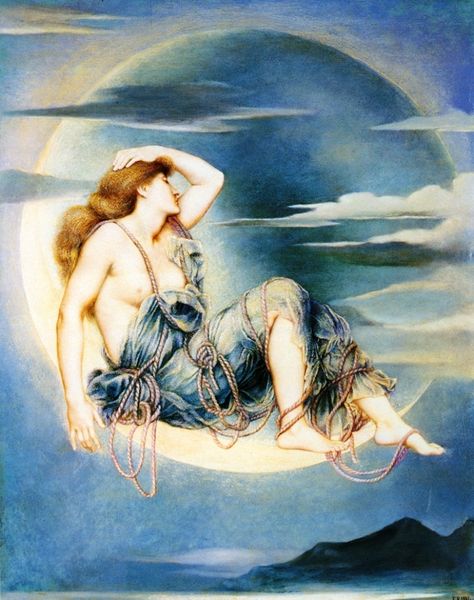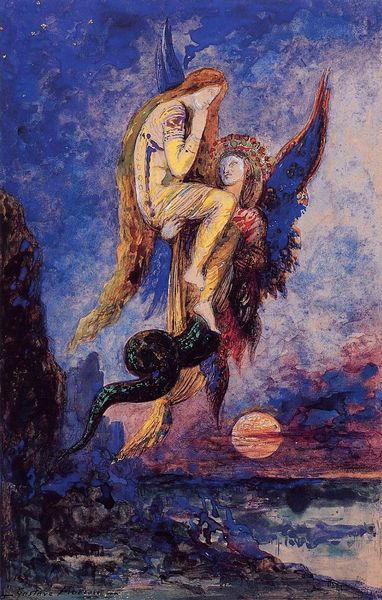
Copyright: Maxfield Parrish,Fair Use
Curator: Maxfield Parrish crafted this oil painting, titled "Contentment," in 1927. What strikes you initially about it? Editor: The intense, almost artificial glow! It gives the whole scene a theatrical feel. The rocks look like props, and those clouds seem like a backdrop waiting for a play to begin. It’s hyperreal and yet deeply unnatural at the same time. Curator: Absolutely. The landscape is indeed dreamlike. Parrish's process was unique; he built up translucent layers of varnish over photographic prints. Consider the socio-economic context: This was during the interwar period, when mass production was on the rise, and Parrish actually saw himself as somewhat of an entertainer, aiming to sell to middle-class homes. Do you see this piece aligning with or rebelling against such forces? Editor: I see a distinct reflection of them! Parrish seems to be embracing industrial production; he wanted everyone to have one of his prints. This makes one consider what labor goes into not just his paintings, but his broader prints for mass consumption. The artist also used commercial methods and that makes him quite relevant within today's conversation of mass produced images. Curator: And what about the two female figures perched upon the rocks? The positioning could be seen as passive. There's a sense of gazing rather than engaging. It certainly could reflect women’s limited social mobility in that historical context. The era of the “flapper” existed but the broader pushback and pressure to confirm also loomed largely. Editor: It's interesting to think about the material consumption and societal roles as both constraints but also potentially opening new opportunities for women. While idealized, maybe Parrish’s art served to spark imaginings outside the everyday realities for his audiences. The rocky foundation and figures echo ancient pottery shapes and Greek figures that serve to highlight art history. It is something classical yet thoroughly modern and commercially viable. Curator: Indeed, he successfully managed to synthesize multiple elements for a wide appeal. Ultimately it blurs the line between artistic production and societal reflection in really compelling ways. Editor: Precisely, by grounding such allegorical and fantastical ideas through consumer channels, "Contentment" provides some intriguing points about commercial artistry in an age defined by production possibilities.
Comments
No comments
Be the first to comment and join the conversation on the ultimate creative platform.













